Signal Generation Using 1d Deep Convolutional Generative Adversarial Networks for Fault Diagnosis of Electrical Machines
Russell Sabir,
Daniele Rosato,
Sven Hartmann,
Clemens Gühmann
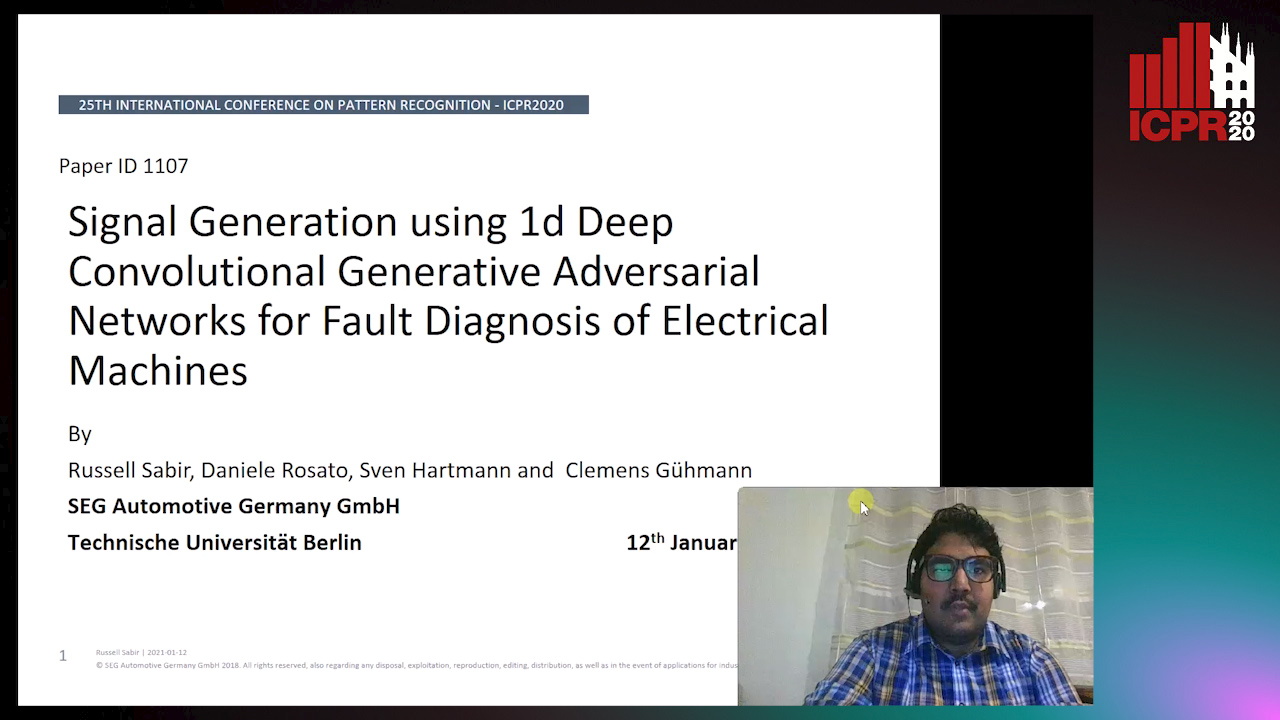
Auto-TLDR; Large Dataset Generation from Faulty AC Machines using Deep Convolutional GAN
Similar papers
GAN-Based Gaussian Mixture Model Responsibility Learning
Wanming Huang, Yi Da Xu, Shuai Jiang, Xuan Liang, Ian Oppermann
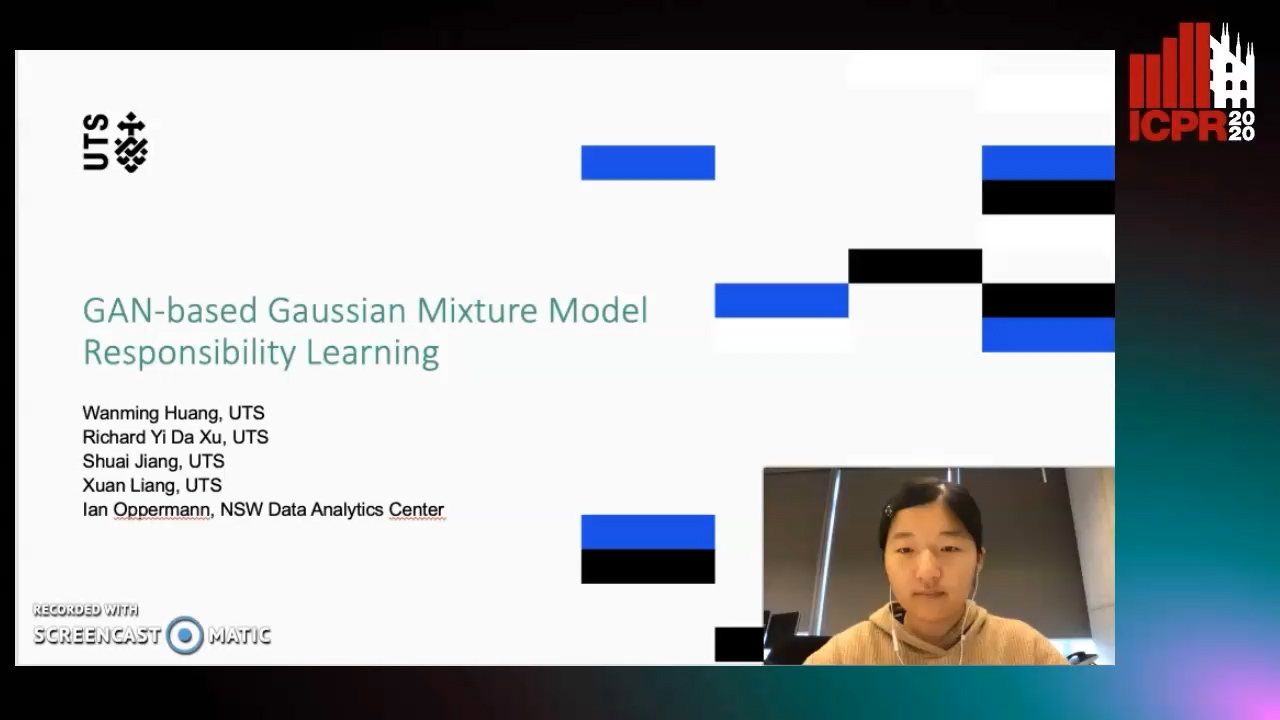
Auto-TLDR; Posterior Consistency Module for Gaussian Mixture Model
Abstract Slides Poster Similar
Semi-Supervised Generative Adversarial Networks with a Pair of Complementary Generators for Retinopathy Screening
Yingpeng Xie, Qiwei Wan, Hai Xie, En-Leng Tan, Yanwu Xu, Baiying Lei

Auto-TLDR; Generative Adversarial Networks for Retinopathy Diagnosis via Fundus Images
Abstract Slides Poster Similar
On the Evaluation of Generative Adversarial Networks by Discriminative Models
Amirsina Torfi, Mohammadreza Beyki, Edward Alan Fox

Auto-TLDR; Domain-agnostic GAN Evaluation with Siamese Neural Networks
Abstract Slides Poster Similar
Leveraging Synthetic Subject Invariant EEG Signals for Zero Calibration BCI
Nik Khadijah Nik Aznan, Amir Atapour-Abarghouei, Stephen Bonner, Jason Connolly, Toby Breckon

Auto-TLDR; SIS-GAN: Subject Invariant SSVEP Generative Adversarial Network for Brain-Computer Interface
Augmentation of Small Training Data Using GANs for Enhancing the Performance of Image Classification

Auto-TLDR; Generative Adversarial Network for Image Training Data Augmentation
Abstract Slides Poster Similar
SAGE: Sequential Attribute Generator for Analyzing Glioblastomas Using Limited Dataset
Padmaja Jonnalagedda, Brent Weinberg, Jason Allen, Taejin Min, Shiv Bhanu, Bir Bhanu
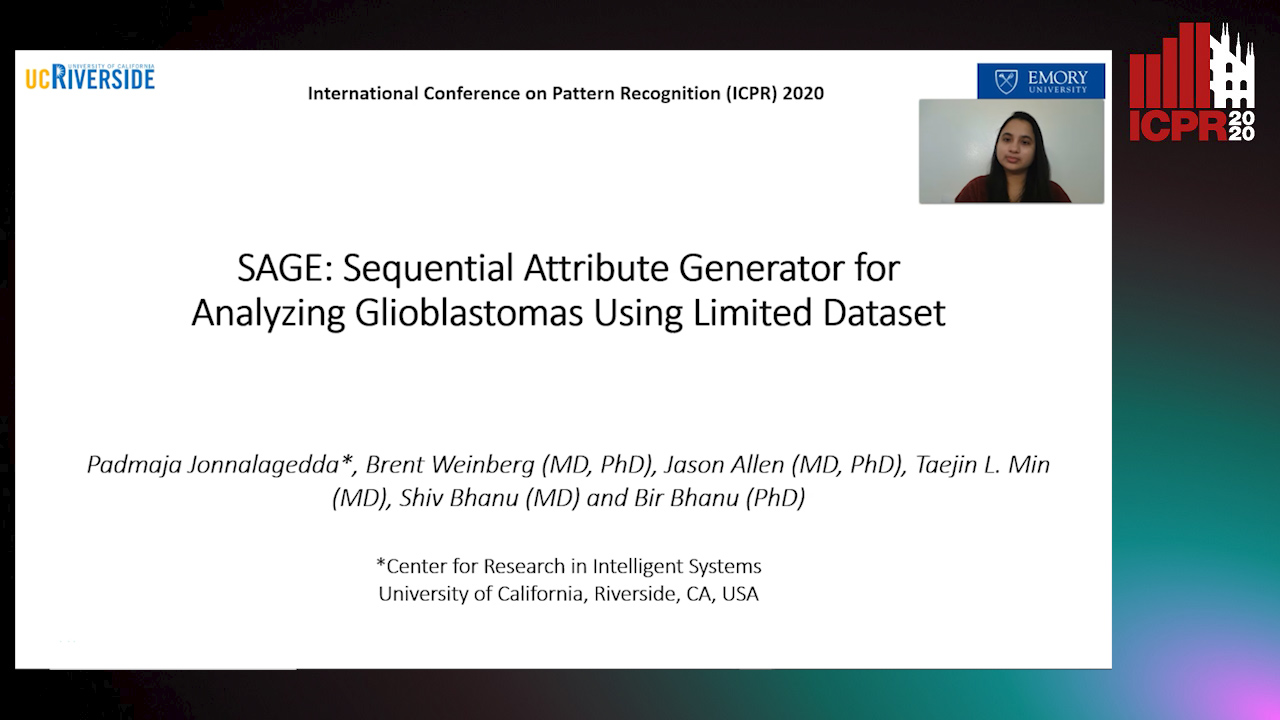
Auto-TLDR; SAGE: Generative Adversarial Networks for Imaging Biomarker Detection and Prediction
Abstract Slides Poster Similar
Hierarchical Mixtures of Generators for Adversarial Learning
Alper Ahmetoğlu, Ethem Alpaydin
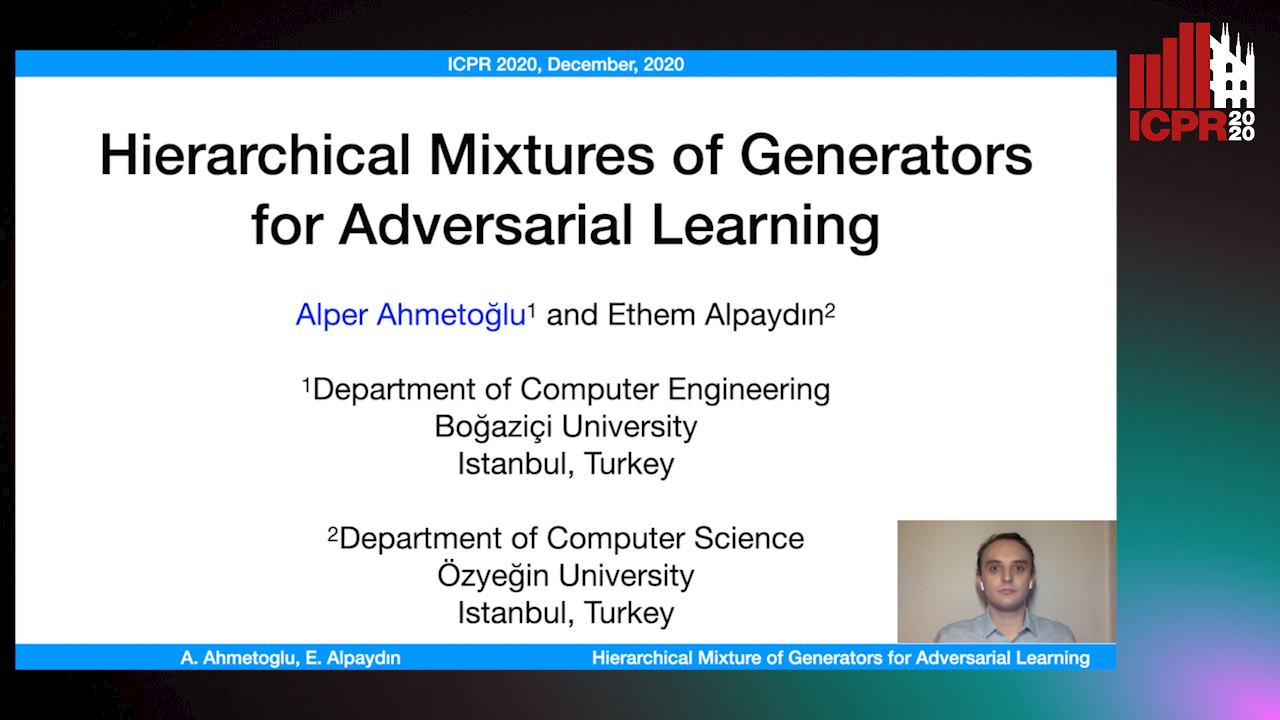
Auto-TLDR; Hierarchical Mixture of Generative Adversarial Networks
CardioGAN: An Attention-Based Generative Adversarial Network for Generation of Electrocardiograms
Subhrajyoti Dasgupta, Sudip Das, Ujjwal Bhattacharya
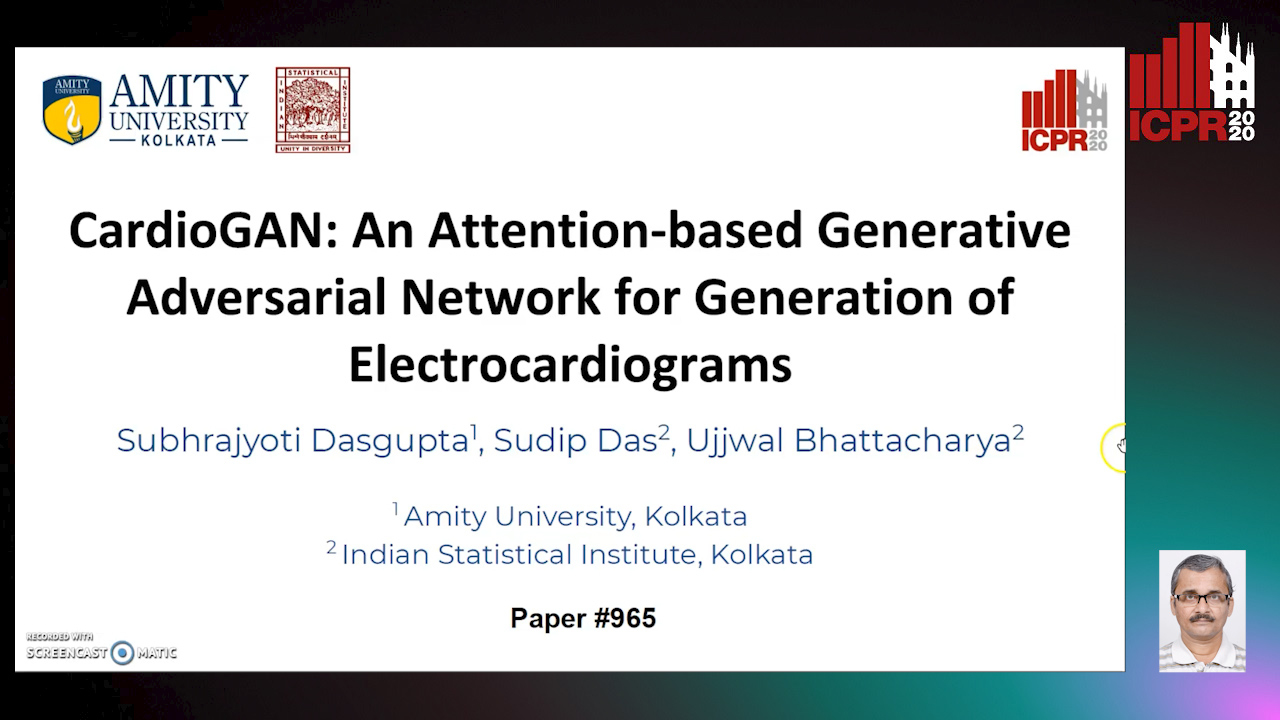
Auto-TLDR; CardioGAN: Generative Adversarial Network for Synthetic Electrocardiogram Signals
Abstract Slides Poster Similar
GAP: Quantifying the Generative Adversarial Set and Class Feature Applicability of Deep Neural Networks
Edward Collier, Supratik Mukhopadhyay

Auto-TLDR; Approximating Adversarial Learning in Deep Neural Networks Using Set and Class Adversaries
Abstract Slides Poster Similar
S2I-Bird: Sound-To-Image Generation of Bird Species Using Generative Adversarial Networks
Joo Yong Shim, Joongheon Kim, Jong-Kook Kim
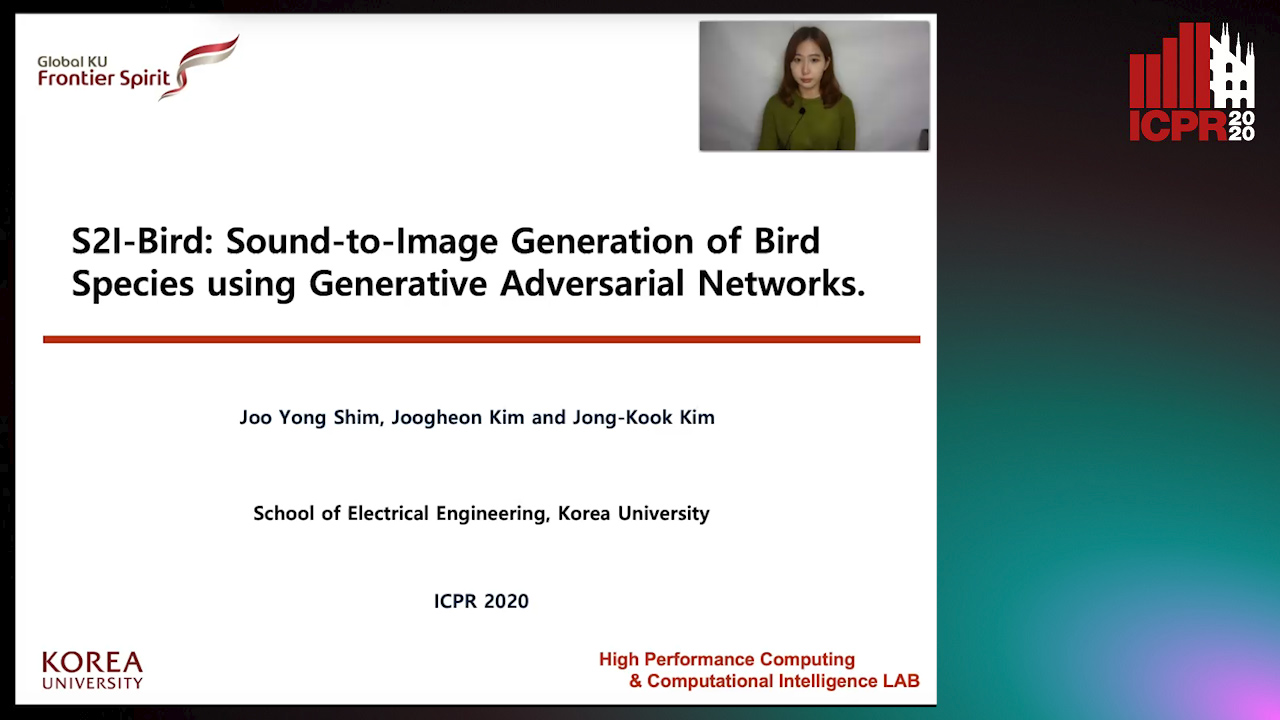
Auto-TLDR; Generating bird images from sound using conditional generative adversarial networks
Abstract Slides Poster Similar
Adversarial Knowledge Distillation for a Compact Generator
Hideki Tsunashima, Shigeo Morishima, Junji Yamato, Qiu Chen, Hirokatsu Kataoka

Auto-TLDR; Adversarial Knowledge Distillation for Generative Adversarial Nets
Abstract Slides Poster Similar
Quantifying the Use of Domain Randomization
Mohammad Ani, Hector Basevi, Ales Leonardis

Auto-TLDR; Evaluating Domain Randomization for Synthetic Image Generation by directly measuring the difference between realistic and synthetic data distributions
Abstract Slides Poster Similar
Local Facial Attribute Transfer through Inpainting
Ricard Durall, Franz-Josef Pfreundt, Janis Keuper

Auto-TLDR; Attribute Transfer Inpainting Generative Adversarial Network
Abstract Slides Poster Similar
IDA-GAN: A Novel Imbalanced Data Augmentation GAN

Auto-TLDR; IDA-GAN: Generative Adversarial Networks for Imbalanced Data Augmentation
Abstract Slides Poster Similar
Phase Retrieval Using Conditional Generative Adversarial Networks
Tobias Uelwer, Alexander Oberstraß, Stefan Harmeling

Auto-TLDR; Conditional Generative Adversarial Networks for Phase Retrieval
Abstract Slides Poster Similar
Continuous Learning of Face Attribute Synthesis
Ning Xin, Shaohui Xu, Fangzhe Nan, Xiaoli Dong, Weijun Li, Yuanzhou Yao

Auto-TLDR; Continuous Learning for Face Attribute Synthesis
Abstract Slides Poster Similar
AVAE: Adversarial Variational Auto Encoder
Antoine Plumerault, Hervé Le Borgne, Celine Hudelot
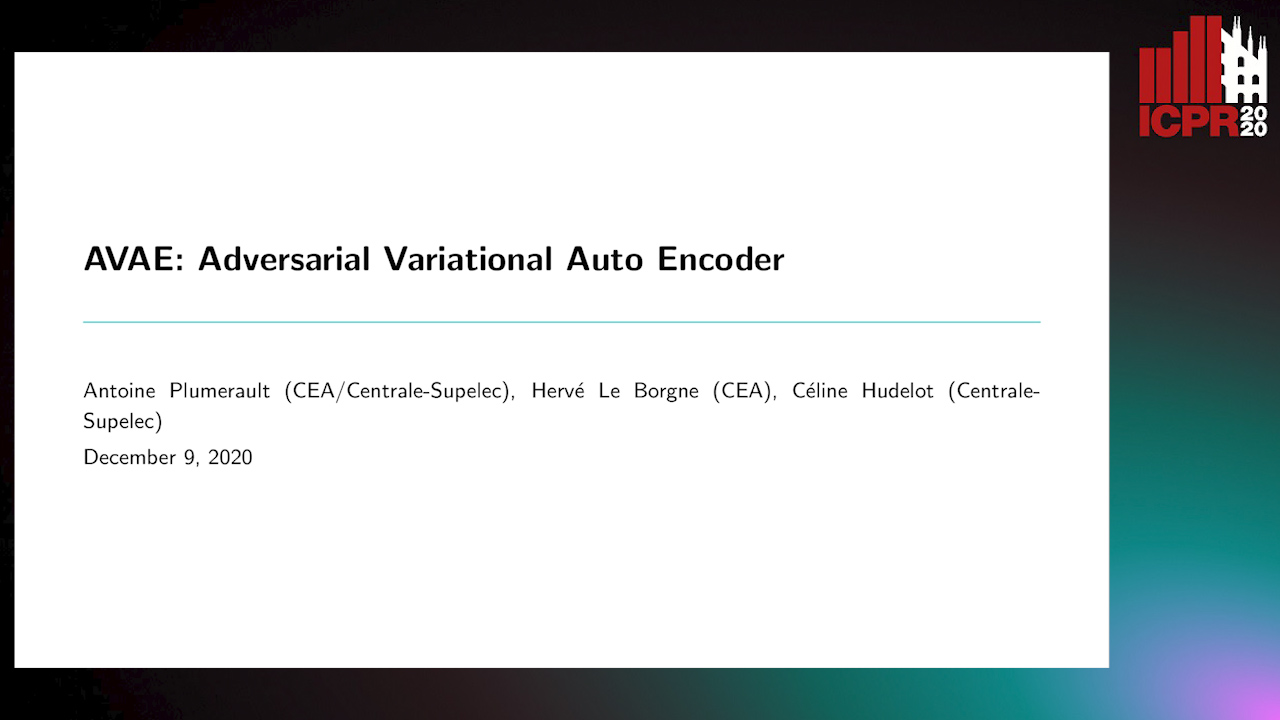
Auto-TLDR; Combining VAE and GAN for Realistic Image Generation
Abstract Slides Poster Similar
Data Augmentation Via Mixed Class Interpolation Using Cycle-Consistent Generative Adversarial Networks Applied to Cross-Domain Imagery
Hiroshi Sasaki, Chris G. Willcocks, Toby Breckon

Auto-TLDR; C2GMA: A Generative Domain Transfer Model for Non-visible Domain Classification
Abstract Slides Poster Similar
MBD-GAN: Model-Based Image Deblurring with a Generative Adversarial Network

Auto-TLDR; Model-Based Deblurring GAN for Inverse Imaging
Abstract Slides Poster Similar
Semi-Supervised Outdoor Image Generation Conditioned on Weather Signals
Sota Kawakami, Kei Okada, Naoko Nitta, Kazuaki Nakamura, Noboru Babaguchi
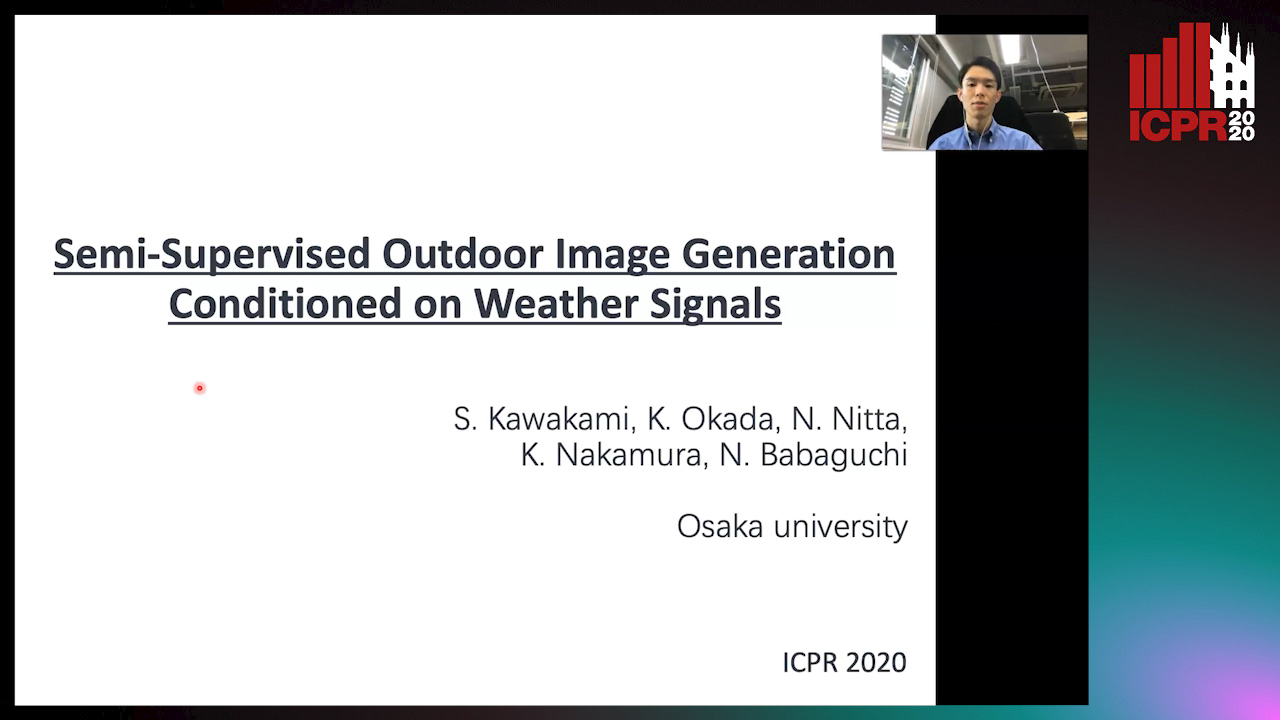
Auto-TLDR; Semi-supervised Generative Adversarial Network for Prediction of Weather Signals from Outdoor Images
Abstract Slides Poster Similar
Generative Latent Implicit Conditional Optimization When Learning from Small Sample

Auto-TLDR; GLICO: Generative Latent Implicit Conditional Optimization for Small Sample Learning
Abstract Slides Poster Similar
Ω-GAN: Object Manifold Embedding GAN for Image Generation by Disentangling Parameters into Pose and Shape Manifolds
Yasutomo Kawanishi, Daisuke Deguchi, Ichiro Ide, Hiroshi Murase
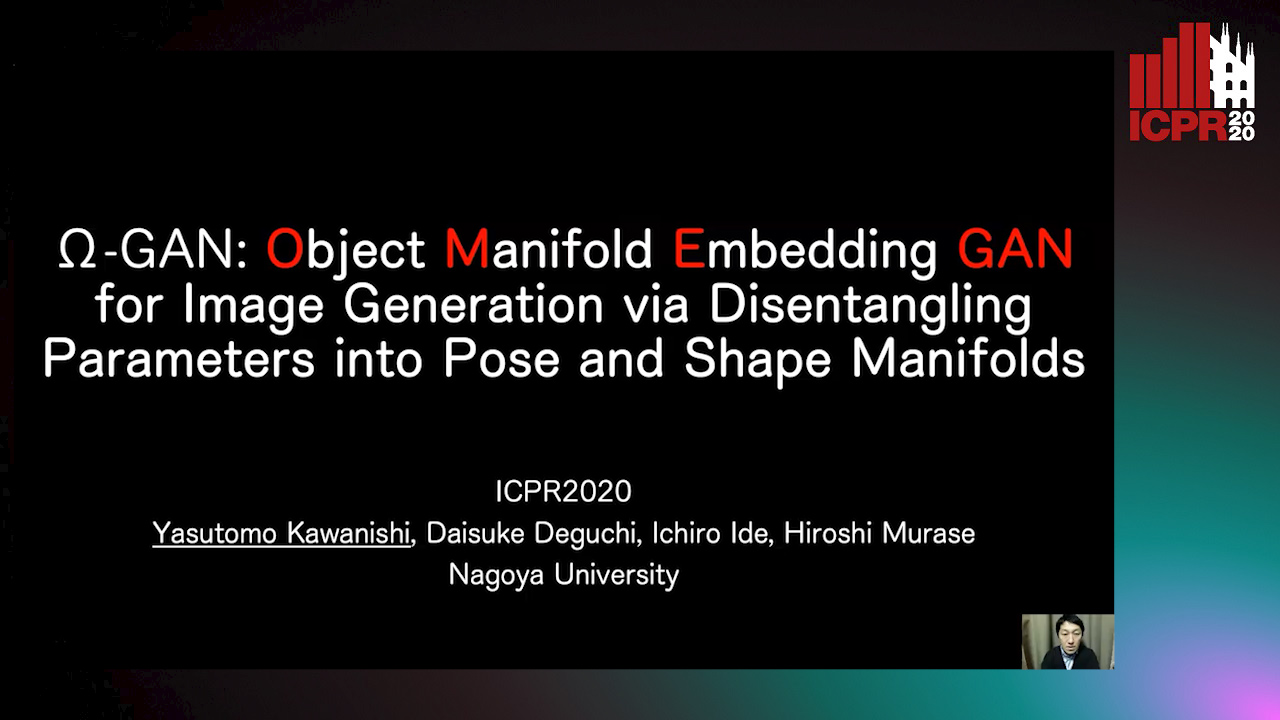
Auto-TLDR; Object Manifold Embedding GAN with Parametric Sampling and Object Identity Loss
Abstract Slides Poster Similar
An Unsupervised Approach towards Varying Human Skin Tone Using Generative Adversarial Networks
Debapriya Roy, Diganta Mukherjee, Bhabatosh Chanda
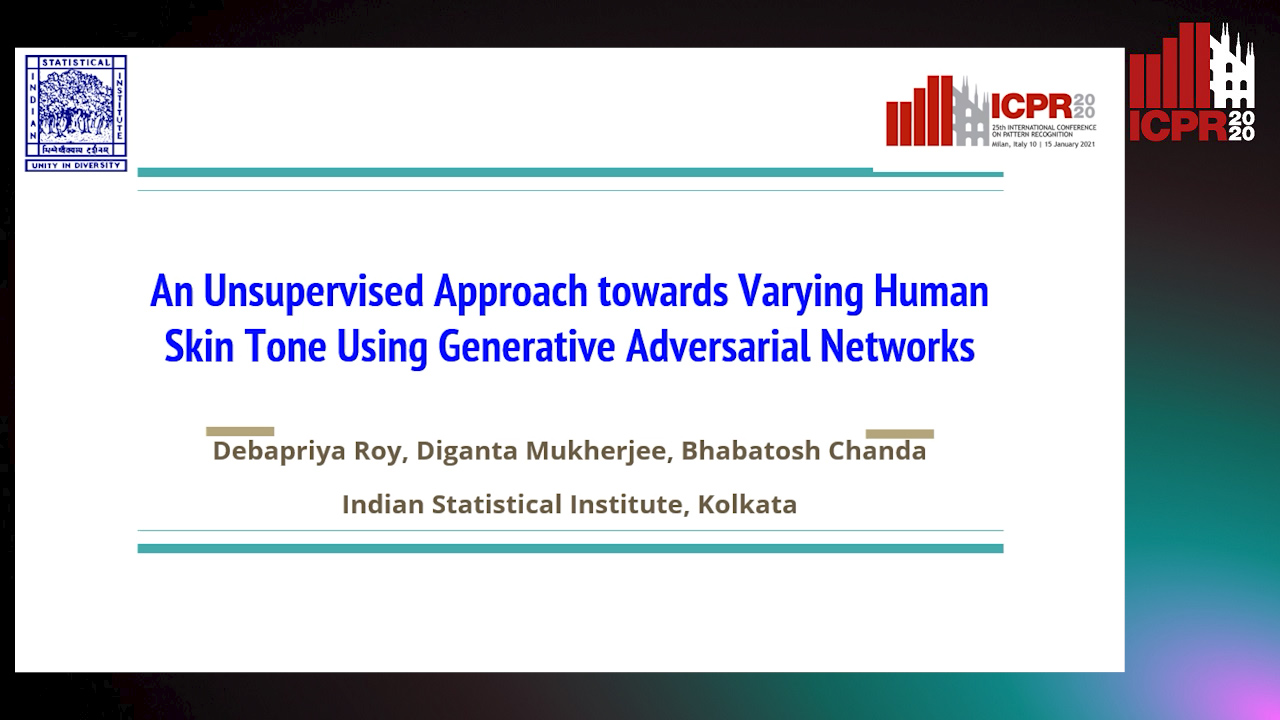
Auto-TLDR; Unsupervised Skin Tone Change Using Augmented Reality Based Models
Abstract Slides Poster Similar
Few-Shot Font Generation with Deep Metric Learning
Haruka Aoki, Koki Tsubota, Hikaru Ikuta, Kiyoharu Aizawa
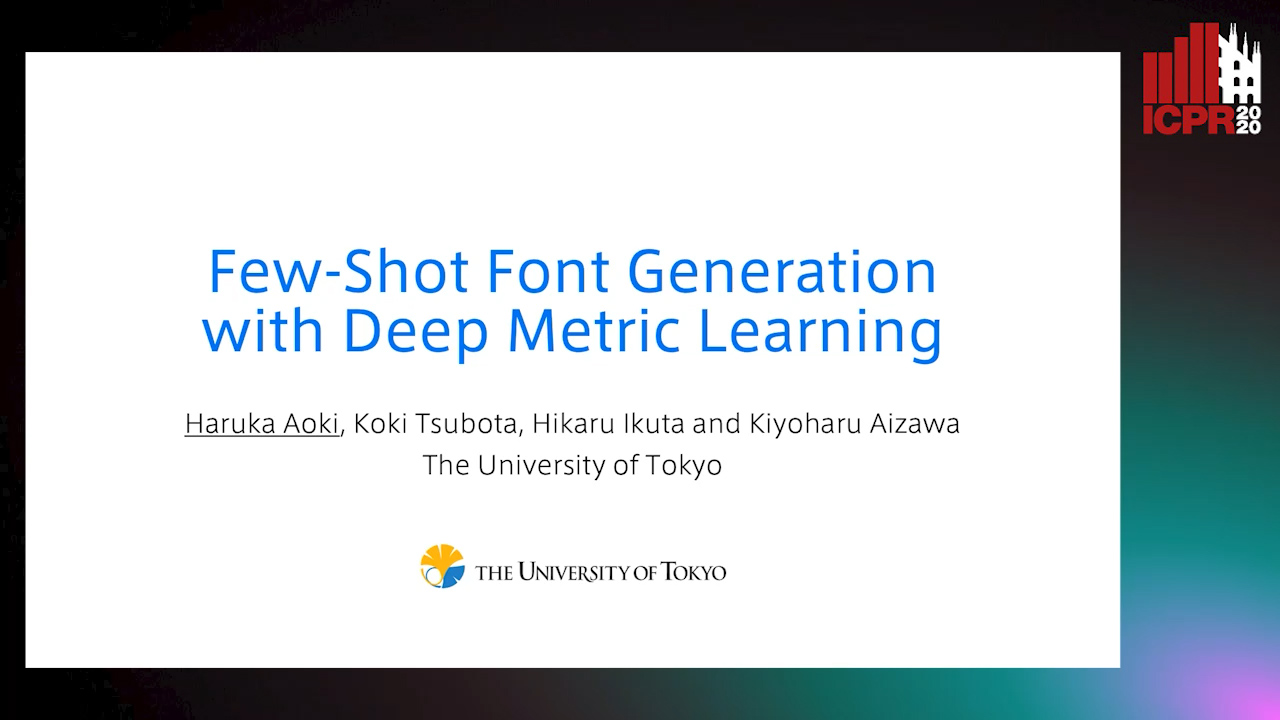
Auto-TLDR; Deep Metric Learning for Japanese Typographic Font Synthesis
Abstract Slides Poster Similar
Attributes Aware Face Generation with Generative Adversarial Networks
Zheng Yuan, Jie Zhang, Shiguang Shan, Xilin Chen
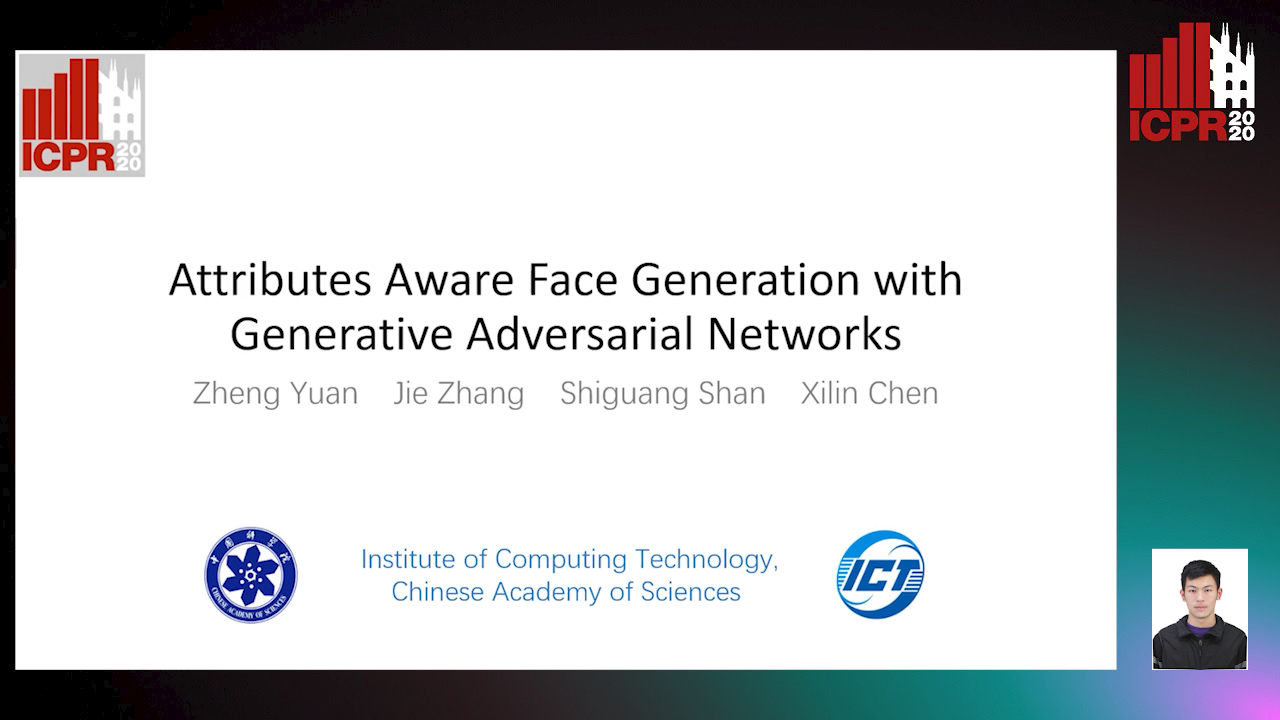
Auto-TLDR; AFGAN: A Generative Adversarial Network for Attributes Aware Face Image Generation
Abstract Slides Poster Similar
Learning Disentangled Representations for Identity Preserving Surveillance Face Camouflage
Jingzhi Li, Lutong Han, Hua Zhang, Xiaoguang Han, Jingguo Ge, Xiaochu Cao

Auto-TLDR; Individual Face Privacy under Surveillance Scenario with Multi-task Loss Function
The Role of Cycle Consistency for Generating Better Human Action Videos from a Single Frame

Auto-TLDR; Generating Videos with Human Action Semantics using Cycle Constraints
Abstract Slides Poster Similar
A Weak Coupling of Semi-Supervised Learning with Generative Adversarial Networks for Malware Classification
Shuwei Wang, Qiuyun Wang, Zhengwei Jiang, Xuren Wang, Rongqi Jing
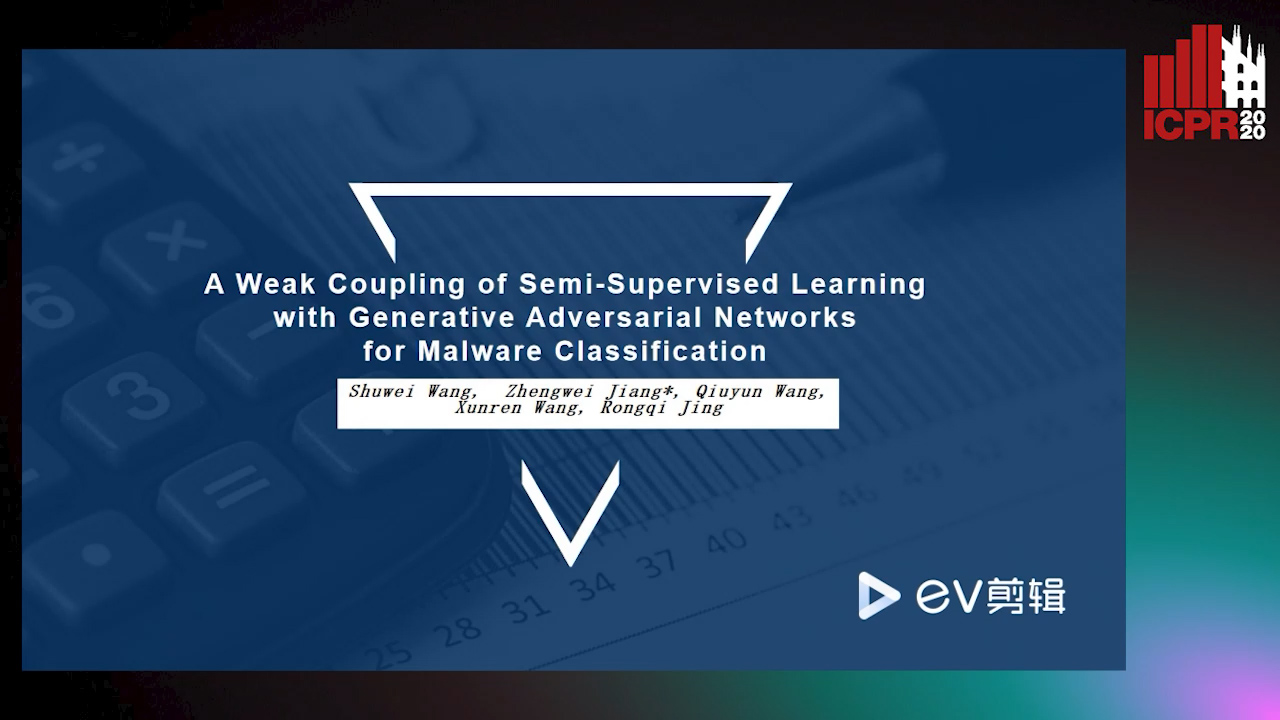
Auto-TLDR; IMIR: An Improved Malware Image Rescaling Algorithm Using Semi-supervised Generative Adversarial Network
Abstract Slides Poster Similar
Improving Gravitational Wave Detection with 2D Convolutional Neural Networks
Siyu Fan, Yisen Wang, Yuan Luo, Alexander Michael Schmitt, Shenghua Yu

Auto-TLDR; Two-dimensional Convolutional Neural Networks for Gravitational Wave Detection from Time Series with Background Noise
Stylized-Colorization for Line Arts
Tzu-Ting Fang, Minh Duc Vo, Akihiro Sugimoto, Shang-Hong Lai
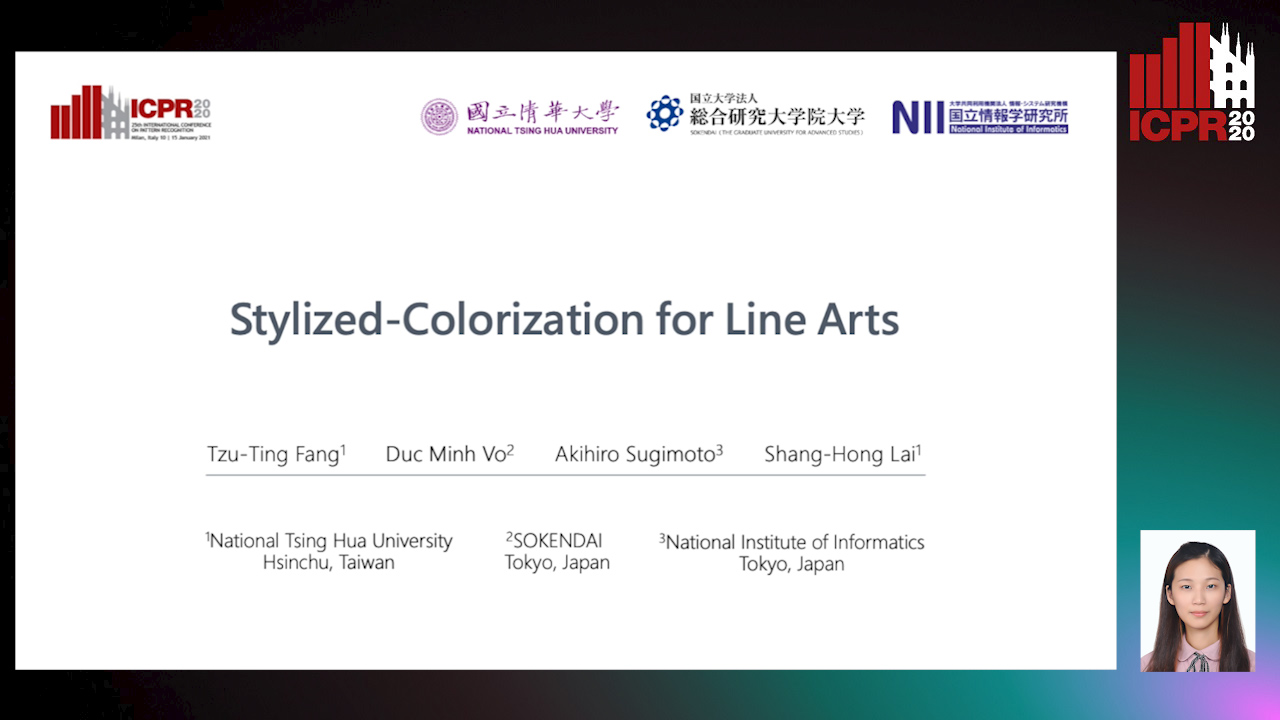
Auto-TLDR; Stylized-colorization using GAN-based End-to-End Model for Anime
Abstract Slides Poster Similar
Cycle-Consistent Adversarial Networks and Fast Adaptive Bi-Dimensional Empirical Mode Decomposition for Style Transfer
Elissavet Batziou, Petros Alvanitopoulos, Konstantinos Ioannidis, Ioannis Patras, Stefanos Vrochidis, Ioannis Kompatsiaris

Auto-TLDR; FABEMD: Fast and Adaptive Bidimensional Empirical Mode Decomposition for Style Transfer on Images
Abstract Slides Poster Similar
Generating Private Data Surrogates for Vision Related Tasks
Ryan Webster, Julien Rabin, Loic Simon, Frederic Jurie

Auto-TLDR; Generative Adversarial Networks for Membership Inference Attacks
Abstract Slides Poster Similar
Galaxy Image Translation with Semi-Supervised Noise-Reconstructed Generative Adversarial Networks
Qiufan Lin, Dominique Fouchez, Jérôme Pasquet

Auto-TLDR; Semi-supervised Image Translation with Generative Adversarial Networks Using Paired and Unpaired Images
Abstract Slides Poster Similar
Attention2AngioGAN: Synthesizing Fluorescein Angiography from Retinal Fundus Images Using Generative Adversarial Networks
Sharif Amit Kamran, Khondker Fariha Hossain, Alireza Tavakkoli, Stewart Lee Zuckerbrod

Auto-TLDR; Fluorescein Angiography from Fundus Images using Attention-based Generative Networks
Abstract Slides Poster Similar
Identity-Preserved Face Beauty Transformation with Conditional Generative Adversarial Networks

Auto-TLDR; Identity-preserved face beauty transformation using conditional GANs
Abstract Slides Poster Similar
A Joint Representation Learning and Feature Modeling Approach for One-Class Recognition
Pramuditha Perera, Vishal Patel

Auto-TLDR; Combining Generative Features and One-Class Classification for Effective One-class Recognition
Abstract Slides Poster Similar
Adaptive Image Compression Using GAN Based Semantic-Perceptual Residual Compensation
Ruojing Wang, Zitang Sun, Sei-Ichiro Kamata, Weili Chen

Auto-TLDR; Adaptive Image Compression using GAN based Semantic-Perceptual Residual Compensation
Abstract Slides Poster Similar
Combining GANs and AutoEncoders for Efficient Anomaly Detection
Fabio Carrara, Giuseppe Amato, Luca Brombin, Fabrizio Falchi, Claudio Gennaro
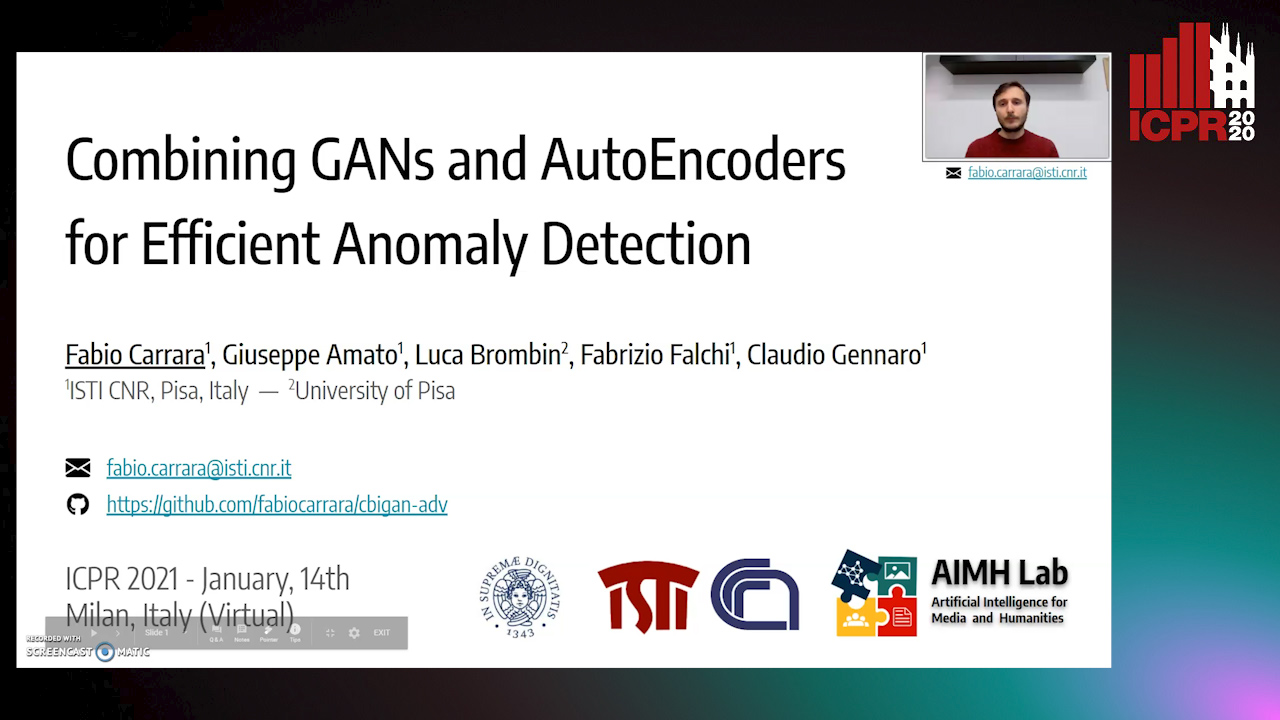
Auto-TLDR; CBIGAN: Anomaly Detection in Images with Consistency Constrained BiGAN
Abstract Slides Poster Similar
Stochastic 3D Rock Reconstruction Using GANs
Sergio Damas, Andrea Valsecchi

Auto-TLDR; Generative Adversarial Neural Networks for 3D-to-3D Reconstruction of Porous Media
Abstract Slides Poster Similar
UCCTGAN: Unsupervised Clothing Color Transformation Generative Adversarial Network
Shuming Sun, Xiaoqiang Li, Jide Li

Auto-TLDR; An Unsupervised Clothing Color Transformation Generative Adversarial Network
Abstract Slides Poster Similar
Separation of Aleatoric and Epistemic Uncertainty in Deterministic Deep Neural Networks
Denis Huseljic, Bernhard Sick, Marek Herde, Daniel Kottke

Auto-TLDR; AE-DNN: Modeling Uncertainty in Deep Neural Networks
Abstract Slides Poster Similar
JUMPS: Joints Upsampling Method for Pose Sequences
Lucas Mourot, Francois Le Clerc, Cédric Thébault, Pierre Hellier
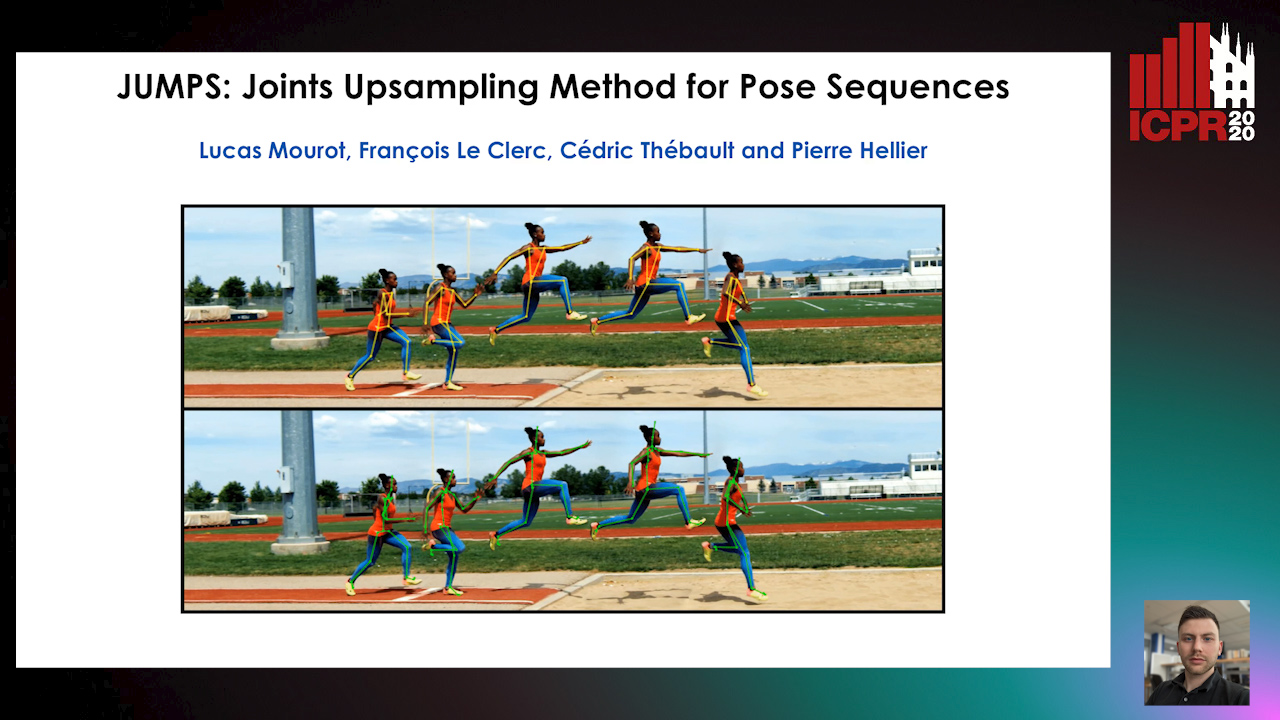
Auto-TLDR; JUMPS: Increasing the Number of Joints in 2D Pose Estimation and Recovering Occluded or Missing Joints
Abstract Slides Poster Similar
Cascade Attention Guided Residue Learning GAN for Cross-Modal Translation
Bin Duan, Wei Wang, Hao Tang, Hugo Latapie, Yan Yan

Auto-TLDR; Cascade Attention-Guided Residue GAN for Cross-modal Audio-Visual Learning
Abstract Slides Poster Similar
Time Series Data Augmentation for Neural Networks by Time Warping with a Discriminative Teacher
Brian Kenji Iwana, Seiichi Uchida
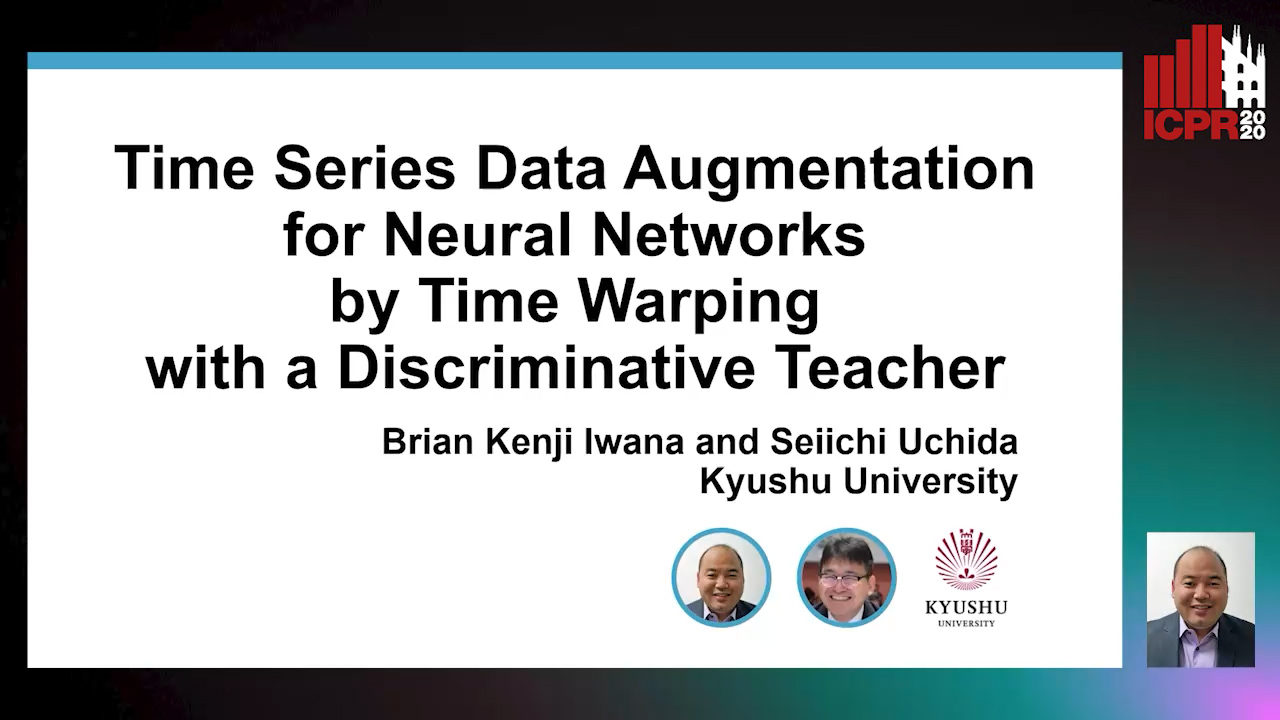
Auto-TLDR; Guided Warping for Time Series Data Augmentation
Abstract Slides Poster Similar
A Quantitative Evaluation Framework of Video De-Identification Methods
Sathya Bursic, Alessandro D'Amelio, Marco Granato, Giuliano Grossi, Raffaella Lanzarotti
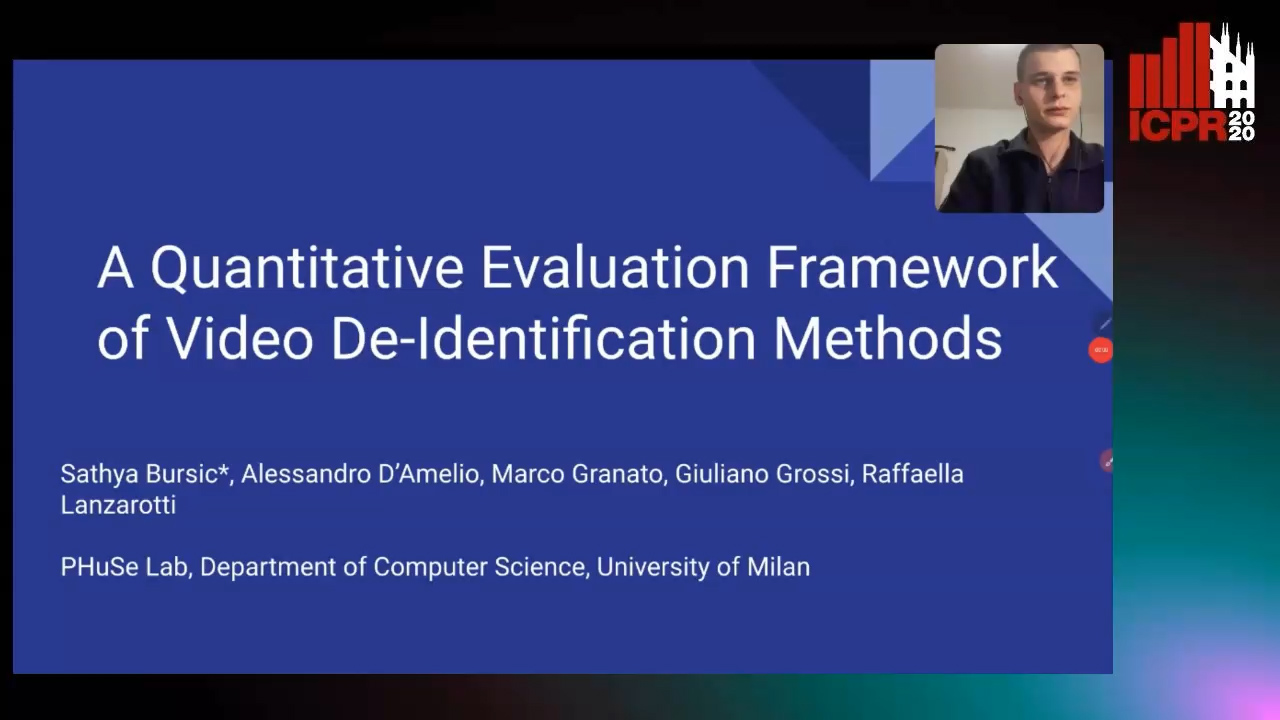
Auto-TLDR; Face de-identification using photo-reality and facial expressions
Abstract Slides Poster Similar
Estimation of Clinical Tremor Using Spatio-Temporal Adversarial AutoEncoder
Li Zhang, Vidya Koesmahargyo, Isaac Galatzer-Levy
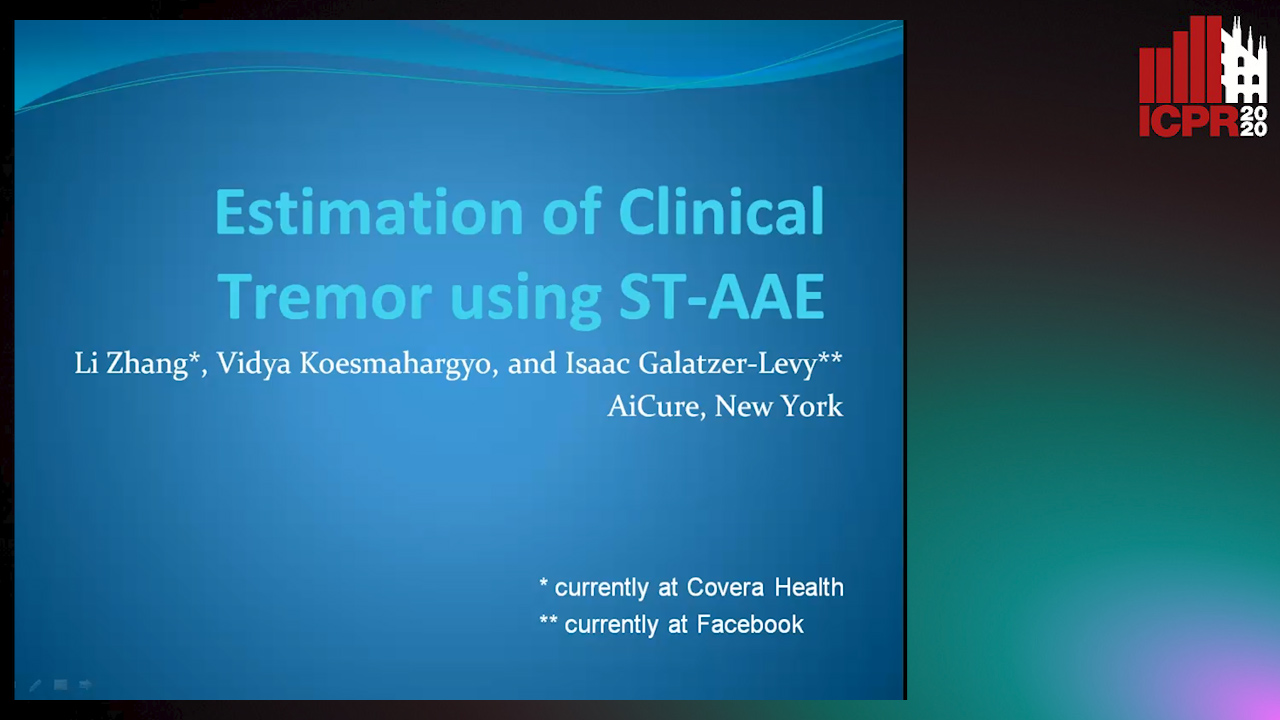
Auto-TLDR; ST-AAE: Spatio-temporal Adversarial Autoencoder for Clinical Assessment of Hand Tremor Frequency and Severity
Abstract Slides Poster Similar
Digit Recognition Applied to Reconstructed Audio Signals Using Deep Learning
Anastasia-Sotiria Toufa, Constantine Kotropoulos

Auto-TLDR; Compressed Sensing for Digit Recognition in Audio Reconstruction
Learning Low-Shot Generative Networks for Cross-Domain Data
Hsuan-Kai Kao, Cheng-Che Lee, Wei-Chen Chiu

Auto-TLDR; Learning Generators for Cross-Domain Data under Low-Shot Learning
Abstract Slides Poster Similar